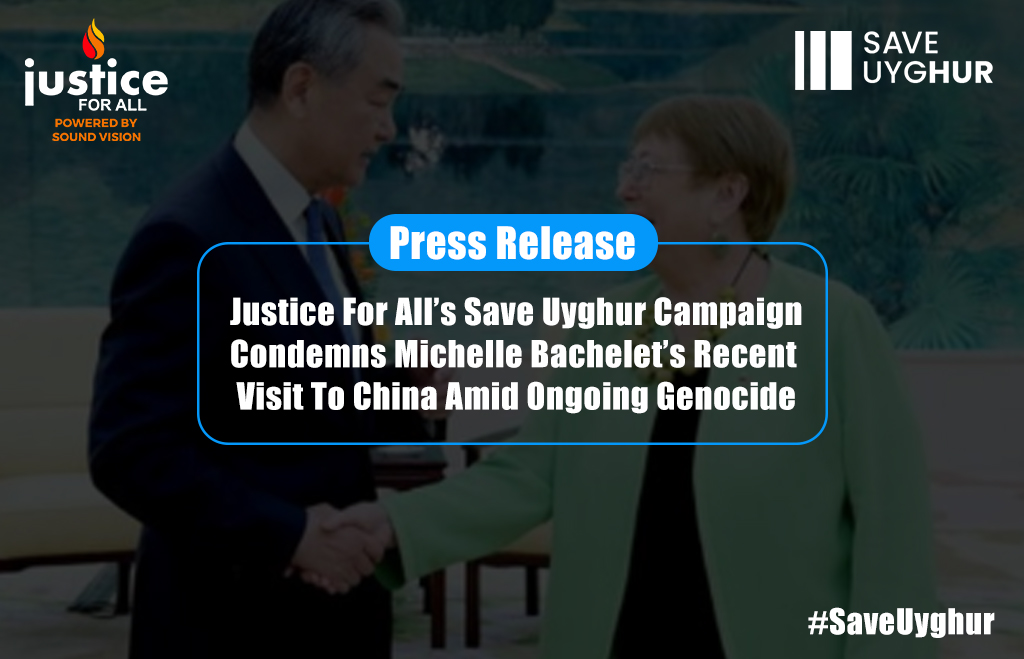FactCheck: Aid seekers make up quarter of all killed in Gaza since GHF operation began – Channel 4

Report on Aid-Related Civilian Fatalities in Gaza and Implications for Sustainable Development Goals
1. Introduction and Key Findings
An analysis of data from the Armed Conflict Location & Event Data Project (ACLED) reveals a significant increase in civilian fatalities associated with humanitarian aid distribution in Gaza following the operational commencement of the Gaza Humanitarian Foundation (GHF) on 26 May. These findings present profound challenges to the achievement of several core Sustainable Development Goals (SDGs), particularly those concerning hunger, health, and peace.
- Since 26 May, civilians seeking aid have accounted for approximately 25% of all direct conflict-related fatalities in Gaza.
- Over 1,100 civilians were killed in aid-related violent incidents in the two-month period following GHF’s intervention, a stark increase from approximately 650 such deaths in the preceding 20 months.
- The majority of these recent fatalities (approximately 870) are linked to incidents at or near GHF distribution sites.
- This trend indicates a severe degradation of safety for civilians, directly undermining the principles of SDG 2 (Zero Hunger) and SDG 16 (Peace, Justice and Strong Institutions).
2. Detailed Analysis of Fatality Data
The data, current as of 25 July, provides a comparative view of aid-related violence before and after GHF assumed control of aid distribution.
2.1 Post-GHF Intervention Period (After 26 May)
- Total Aid-Related Fatalities: Over 1,100 civilians killed.
- Proportion of Total Fatalities: In June, the first full month of GHF operations, over one-third of all conflict-related deaths in Gaza were civilians seeking aid. During the week of 15 June, this figure rose to nearly 50% (269 out of 561 deaths).
- Attribution: ACLED data attributes almost all of these killings to Israeli forces firing on civilians. Eyewitness reports corroborate this, describing GHF sites as “death traps” where forces have used live fire and other means, leading to direct casualties and deadly stampedes.
2.2 Pre-GHF Intervention Period (Before 26 May)
- Total Aid-Related Fatalities: Approximately 650 deaths over 20 months.
- Proportion of Total Fatalities: In most months, aid-related deaths constituted a minimal percentage of total fatalities. The previous peak was in March 2024, at approximately 7%.
3. Impact on Sustainable Development Goals (SDGs)
The escalation in violence at aid distribution points represents a critical failure to uphold international humanitarian principles and a significant setback for the 2030 Agenda for Sustainable Development.
- SDG 2: Zero Hunger: The act of seeking food aid has become a life-threatening activity. This violence creates a lethal barrier to food access for a desperate population, directly contravening the goal of ending hunger and ensuring access to safe and nutritious food.
- SDG 3: Good Health and Well-being: The high number of civilian deaths and injuries is a direct assault on the well-being of the population. The creation of environments where seeking essential aid leads to death undermines every aspect of this goal.
- SDG 16: Peace, Justice and Strong Institutions: The events document a catastrophic failure to protect non-combatants, a core tenet of peace and justice. The targeting of civilians at aid sites demonstrates a collapse of safe institutions and accountability, fundamentally opposing the goal of reducing all forms of violence and related death rates. Israel and GHF deny the reports, attributing incidents to necessary warning shots or blaming Hamas for causing panic.
- SDG 17: Partnerships for the Goals: The GHF initiative, backed by the US and Israel, is an example of a partnership intended to deliver humanitarian aid. However, its operational reality has led to outcomes that are diametrically opposed to sustainable development, highlighting a failure in partnership effectiveness and accountability. GHF has claimed, without providing evidence, that many fatal incidents were linked to UN convoys.
4. Data Source and Methodology
- Data Provider: The analysis is based on data from the Armed Conflict Location & Event Data Project (ACLED), a non-profit organization that collects and maps data on political violence globally.
- Methodology: ACLED utilizes multiple sources, including local reports (e.g., Gaza Ministry of Health), news media, and international organization reports. To ensure conservative estimates, researchers record the lowest reported number of fatalities for any given event and only log fatalities that are explicitly reported. This methodology suggests the true fatality count may be higher than the figures cited.
- Verification: The ACLED figures show a close correspondence with fatality counts compiled by the United Nations.
1. SDGs Addressed in the Article
SDG 2: Zero Hunger
- The article discusses the critical need for humanitarian aid in Gaza, with civilians being killed while trying to access it. This directly relates to the goal of ending hunger and ensuring access to food, as the violence is a barrier to food security for a vulnerable population. The text mentions “desperate Palestinians killed by Israeli forces while queuing at these sites” and a previous “blockade on Gaza which prevented any aid from entering the Strip,” highlighting the severe food access crisis.
SDG 16: Peace, Justice and Strong Institutions
- This is the most prominent SDG in the article. The entire piece is an analysis of “political violence,” “conflict-related deaths,” and the failure to protect civilians in a conflict zone. It details a sharp rise in fatalities linked to aid distribution, attributes the killings to specific actors (“Israeli forces firing on civilians”), and mentions allegations of “war crimes.” This points directly to the failure to reduce violence and ensure justice.
SDG 3: Good Health and Well-being
- The article’s focus on “fatalities,” “killings,” and “deaths” is a direct concern for SDG 3. The violence described results in the loss of life and undermines the well-being of the population. The article explicitly separates “direct conflict-related deaths” from “indirect deaths, for example, from starvation,” both of which are critical health outcomes.
2. Specific Targets Identified
Under SDG 16: Peace, Justice and Strong Institutions
- Target 16.1: Significantly reduce all forms of violence and related death rates everywhere.
- The article is a direct analysis of the failure to meet this target. It provides specific data showing a “sharp rise in the number and proportion of aid-related deaths in Gaza.” For example, it states that “over 1100 civilians were killed in violent incidents linked to aid since 26 May,” which is a clear measure of violence and related death rates.
Under SDG 2: Zero Hunger
- Target 2.1: By 2030, end hunger and ensure access by all people, in particular the poor and people in vulnerable situations… to safe, nutritious and sufficient food all year round.
- The article highlights a critical failure in providing “safe” access to food. The fact that civilians are being killed while seeking aid demonstrates that access is not safe. Aid agencies are quoted describing the distribution sites as a “death trap,” directly contradicting the principle of safe access to food.
3. Indicators Mentioned or Implied
Indicators for Target 16.1 (Reduce violence and death rates)
- Number of conflict-related deaths: The article provides precise figures from ACLED data.
- “Over 1100 civilians were killed in violent incidents linked to aid since 26 May.”
- “a total of around 650 people were killed seeking aid” in the twenty previous months.
- Proportion of deaths linked to a specific cause: The analysis uses this as a key indicator of the escalating problem.
- “Civilians seeking aid have made up a quarter of all those killed in Gaza since the Gaza Humanitarian Foundation (GHF) began operating there.”
- “in June this year… over a third of all those killed in the Strip were civilians seeking aid.”
- Attribution of violence: The data identifies the actors responsible for the violence.
- “The ACLED data says that almost all the aid-related killings were attributed to Israeli forces firing on civilians.”
Indicators for Target 2.1 (Ensure safe access to food)
- Number of fatalities at aid distribution points: This serves as a direct, negative indicator of the safety of food access.
- “the majority of these aid-related killings – around 870 – can be linked to GHF sites.”
4. Table of SDGs, Targets, and Indicators
| SDGs | Targets | Indicators |
|---|---|---|
| SDG 16: Peace, Justice and Strong Institutions | 16.1: Significantly reduce all forms of violence and related death rates everywhere. |
|
| SDG 2: Zero Hunger | 2.1: End hunger and ensure access by all people… to safe… food. |
|
| SDG 3: Good Health and Well-being | Relates to overall goal of ensuring healthy lives and promoting well-being. |
|
Source: channel4.com

What is Your Reaction?
 Like
0
Like
0
 Dislike
0
Dislike
0
 Love
0
Love
0
 Funny
0
Funny
0
 Angry
0
Angry
0
 Sad
0
Sad
0
 Wow
0
Wow
0














































































